- Wednesday, July 02, 2025
As a result of the dinner diplomacy, various topics and deals were discussed between the two democracies, enhancing the two sides’ economic, defence, technological, and cultural ties.
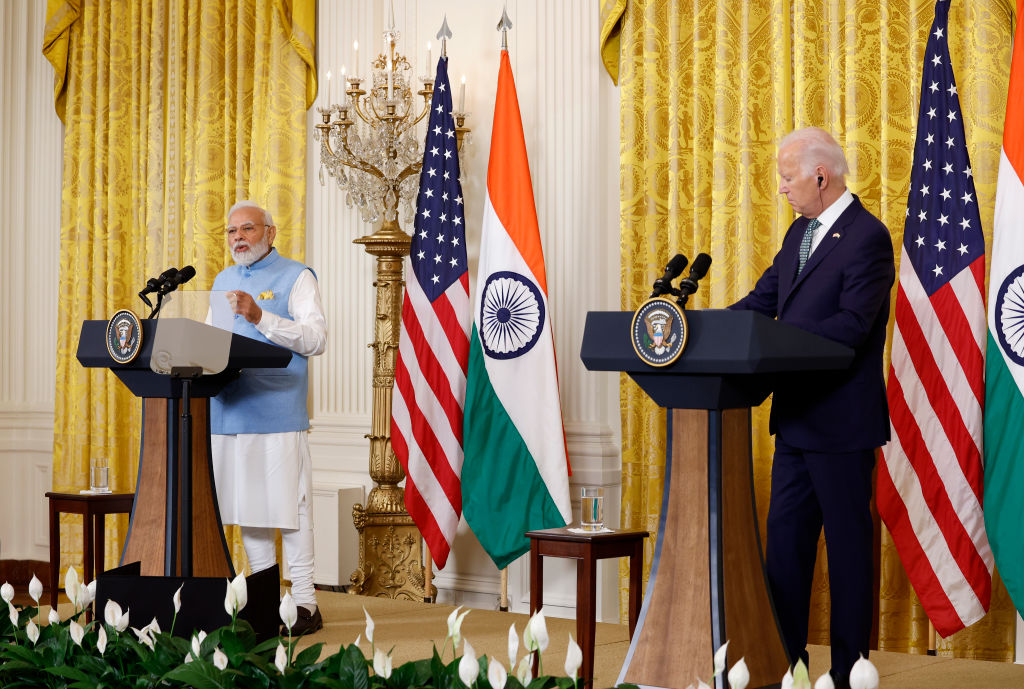
By: Prof Dr Prem Lal Joshi
THE recent state visit by prime minister Narendra Modi to the US is not only unprecedented in terms of showcasing the economic, defence, technological, and cultural diplomacy leading to an improved overall US–India strategic business partnership and friendship, but also one of the most followed world leaders.
Despite having made multiple prior trips to the US, the latest trip was Modi’s first official state visit to the US. President Joe Biden and first lady Jill Biden hosted a state dinner for PM Modi — a rare honour accorded to a foreign leader by Washington DC. As a result of the dinner diplomacy, various topics and deals were discussed between the two democracies, enhancing the two sides’ economic, defence, technological, and cultural ties.
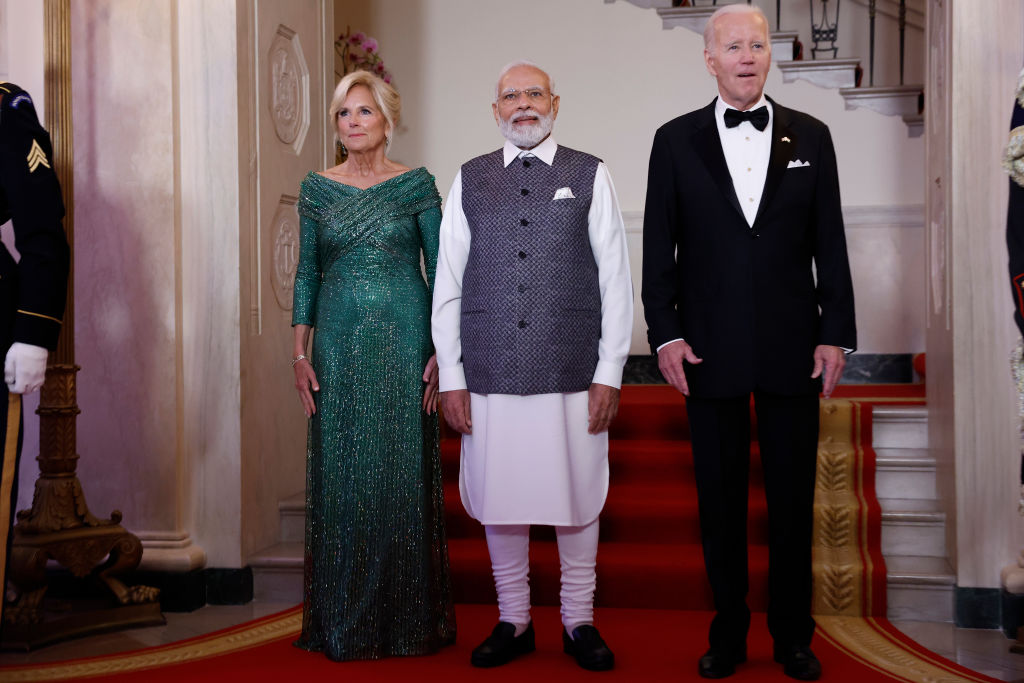
Without a doubt, Modi is a charismatic global leader who attracts close friendships with other leaders due to his personality and impromptu speeches. For instance, he has done a great job of keeping in touch with previous presidents Barack Obama, Donald Trump, and now Biden.
The main achievements of Modi’s visit to the US in key sectors of economic, defence, technological, and cultural diplomacy are discussed in this article.
Deepening economic cooperation and a shared determination on both sides to transform the bilateral relationship into a “global strategic partnership” serve as the foundation of the Indo-US strategic partnership. Although there are certain challenges, bilateral trade is at a historic high and has boundless potential.
To show them how India’s economy is expanding not just quickly but also broadly, Modi has visited with a number of US corporate titans, including Elon Musk and the CEOs of Apple, Google, and Microsoft. According to Modi, India has enormous potential for investment in a variety of sectors, including infrastructure, defence, agriculture, etc. Additionally, thanks to the ‘Make in India’ policy, manufacturing costs are low in India, the country with the most people in the world.
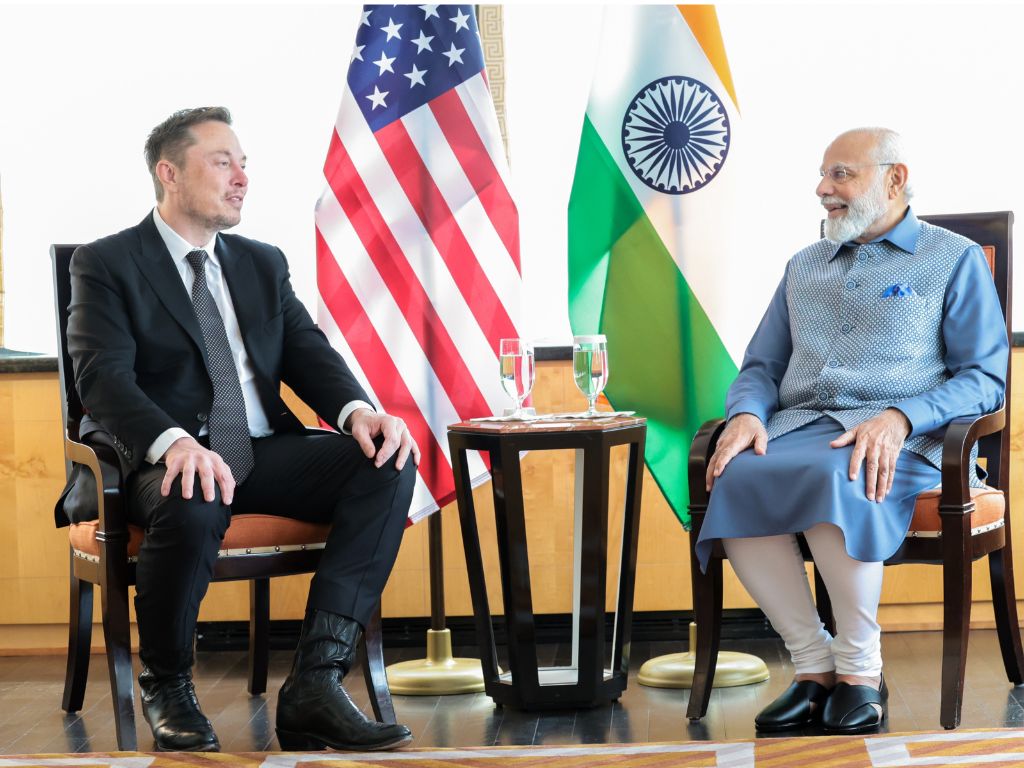
It should also be mentioned that the US has become India’s largest trading partner thus far. By surpassing the highest ever amount of $128.78 billion in FY 2023, India and the US marked an important turning point in their bilateral commerce. It should be noted that in 2022–2023, exports to the US increased by 2.81 per cent to $78.31 billion from $76.18 billion, while imports increased by nearly 16 per cent to $50.24 billion.
The US has now overtaken Europe as India’s top trading partner for the second year in a row. Additionally, with cumulative foreign direct investment inflows of $56,753 million from April 2000 to September 2022, the US is the third-largest investor in India. With new agreements being reached between two sides, the Indian economy is expected to further grow faster.
According to foreign policy experts, the Biden administration has focused on India as a strong potential counterweight to China, which the US views as its most potent rival on the international stage. The defence agreements between the two countries will help India secure its borders with both China and Pakistan, two of its hostile neighbours, and try to reduce the country’s heavy reliance on Russia for military supplies.
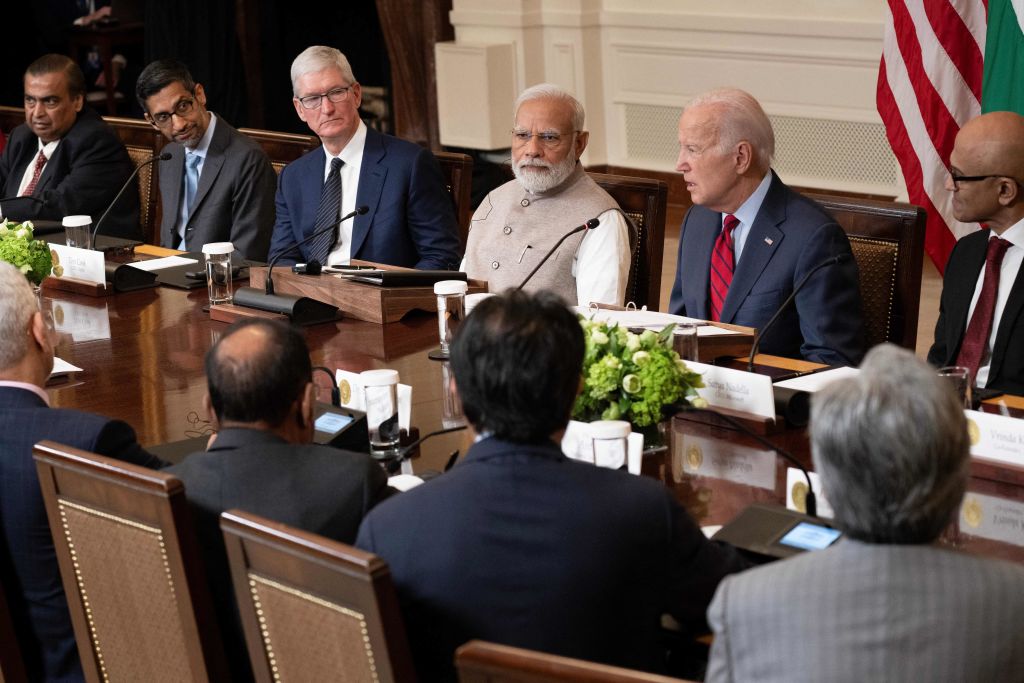
With respect to defence deals, the following are the highlights between the two countries:
· India and the U.S. entered into a new deal to jointly produce F414 jet engines in India, involving General Electric and Hindustan Aeronautics.
· A master ship repair agreement will lead to cost and time savings for the US military by enabling American navy ships to be serviced and repaired in Indian shipyards.
· The so-called India-US Defence Acceleration Ecosystem will aim to integrate India’s growing private sector defence industry with the U.S. defence sector.
· An agreement to purchase MQ-9B Sea Guardian drones from India.
· On the technological front, American and Indian companies will be partnering to build semiconductor facilities to promote supply chain diversification.
· The announcements also include measures by the US to make it simpler for Indian workers to get visas and increased cooperation between the countries’ space programmes.
· A $2.75 billion semiconductor assembly and testing plant is being built in India by Micron Technology Inc., and Applied Materials Inc. will reveal a new semiconductor centre for commercialization and innovation.
A training programme in India for up to 60,000 engineers has been announced by chip producer Lam Research.
· Biden also mentioned the advancement of open RAN telecommunications networks, the security of semiconductors and supply chains, and the expansion of our main defence alliance through increased joint exercises, collaboration between our defence industry, and consultation.
· The two nations agreed to enhance crucial mineral supply chains, advance telecommunication capabilities, and work on AI breakthroughs. • US and Indian companies will collaborate to create semiconductor facilities to support supply chain diversity.
· Applied Materials will also reveal the opening of a new commercialisation and innovation centre for semiconductors in India. “This is India’s time to drive incredible growth, and we are very much looking forward to working with the prime minister and everyone in India to achieve tremendous success together,” firm CEO Gary Dickerson said.
Agreements have been reached regarding India purchasing jet engines, drones, jointly manufacturing semiconductors, and other capabilities as a result of the significant defence and technology diplomacy of Modi and his team. These partnerships will help to further the missions of ‘Make India’ and ‘Atmanirbhar Bharat’.
It is to be noted that cultural diplomacy is the exchange of ideas, information, art, language, and other aspects of culture among nations and peoples in order to foster mutual understanding. Yoga and the New India it represents have given soft power to cultural diplomacy. The Modi government has underlined India’s contributions to global culture and attempted to fortify diplomatic connections.
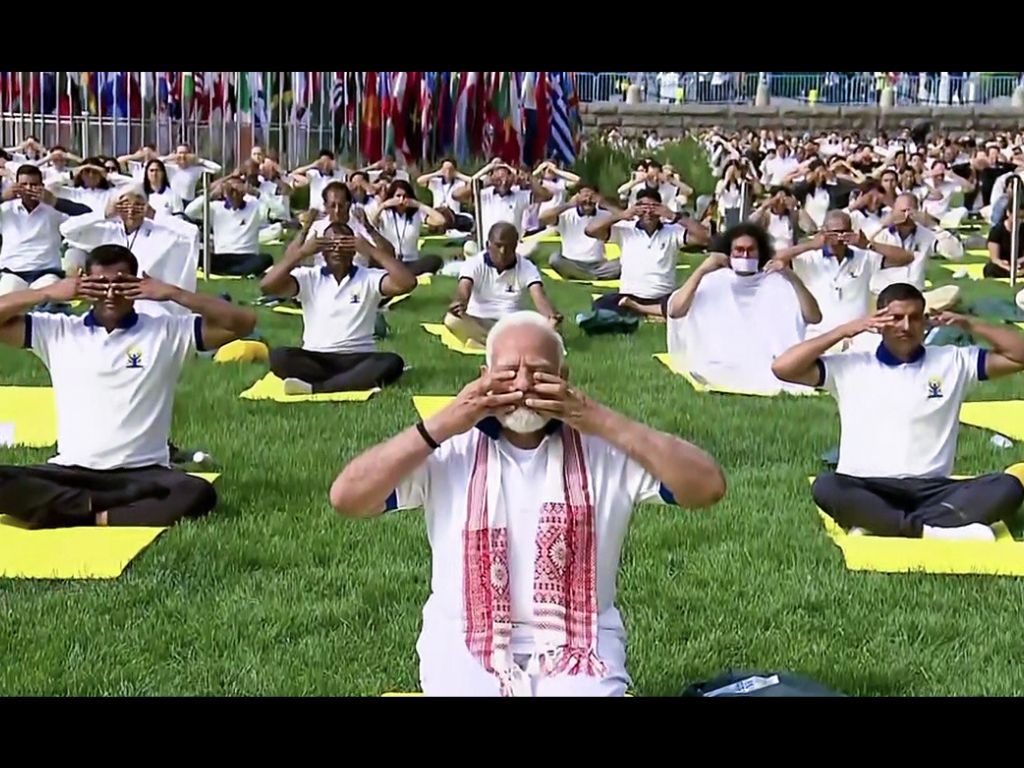
A crucial element of Modi’s cultural diplomacy during his visit to the US was bringing and promoting yoga to the UN and North America.
In order to boost cultural ties and diplomacy, both Modi and the Bidens exchanged unique gifts with each other:
· PM Modi gave President Biden a unique sandalwood box. An expert craftsman from Jaipur painstakingly handmade this box, showing the beautiful artistry and craftsmanship of India. The box includes a Diya, an oil lamp with significant spiritual importance in Indian culture, as well as a statue of Lord Ganesha.
· As a token of thanks, Modi gave Jill Biden a 7.5-carat lab-grown diamond.
· While the Bidens gave a handmade vintage American book galley from the early 20th century to Modi, the gift served as a sign of the two countries’ common appreciation of learning and literary legacy.
· Biden received a first edition copy of the 1937 English translation of “The Ten Principles of Upanishads”.
· Biden gave Modi a vintage American camera along with the book galley, emphasising the spirit of creative expression and photography. A hardback book on American wildlife photography and a first edition signed copy of Robert Frost’s “Collected Poems” were also included, honouring American literature and the natural world.
Furthermore, with excitement, Indian students are “on pace to become the largest foreign student community in the United States with a 20 per cent increase last year alone,” the officials said, adding that the U.S. government wants to welcome more Indian students and workers.
The diaspora community that links India with the United States was also excited when Modi set his foot on the American soil.
Everywhere and every time he visits, Modi gives India recognition, glory, renown, business, and new deals. He makes an excellent case in that passage that international leaders should take Indians and Indian issues seriously because they are an emerging powerhouse. When an Indian visits abroad, he feels proud.
I give PM Modi’s visit to the US a 9 out of 10, noting that it added a fresh chapter to history that earlier Indian prime ministers were unable to do.
Former accounting professor Dr. P. L. Joshi regularly contributes to India Weekly. The opinions conveyed in the piece are the author’s own and do not represent any institution(s). He can be reached at [email protected].